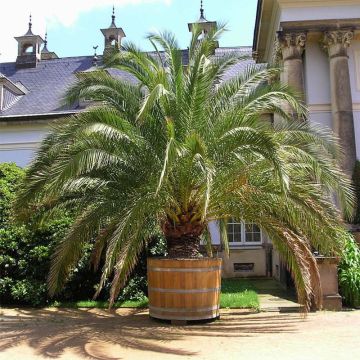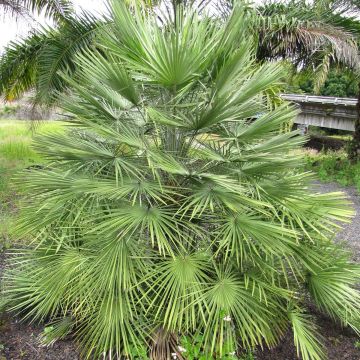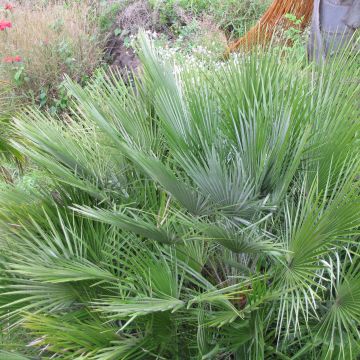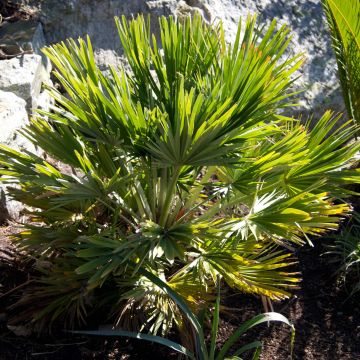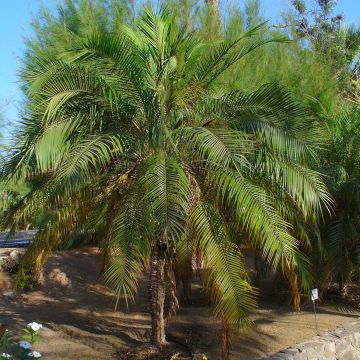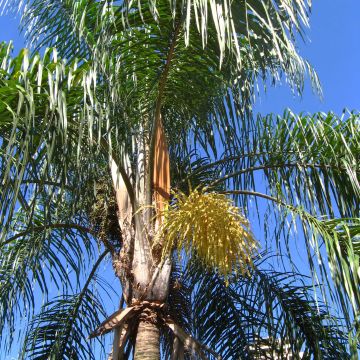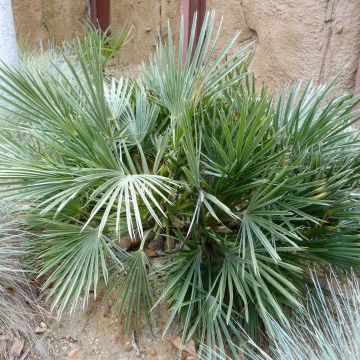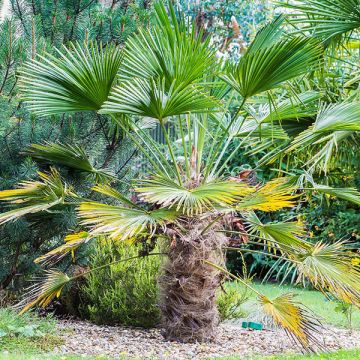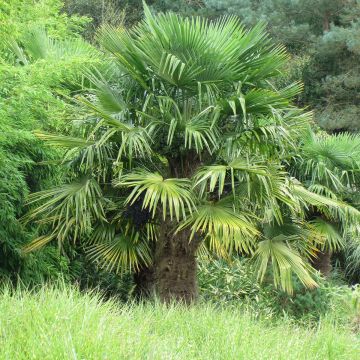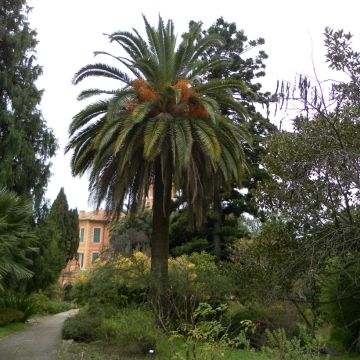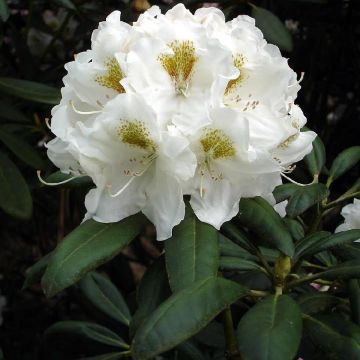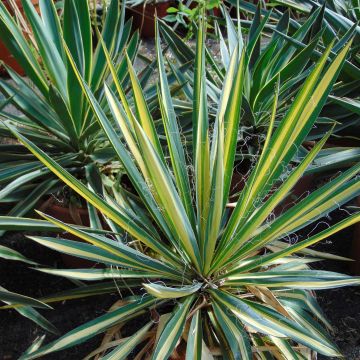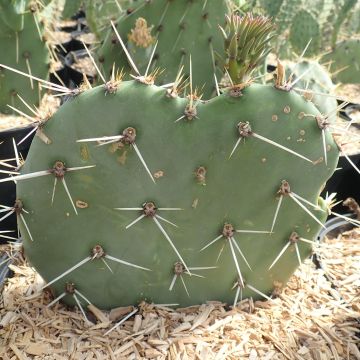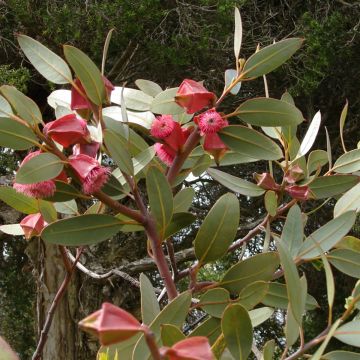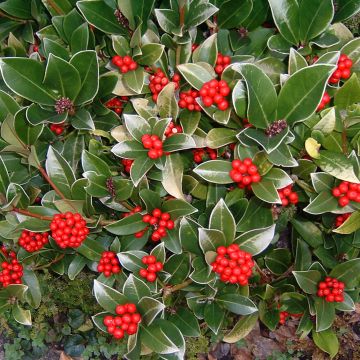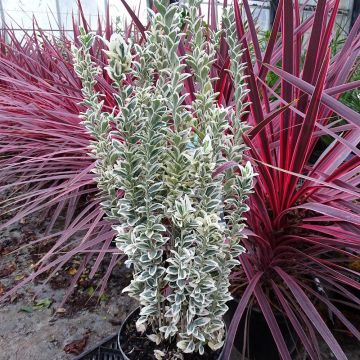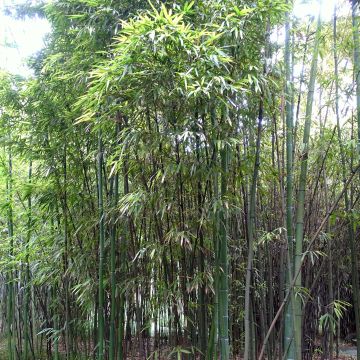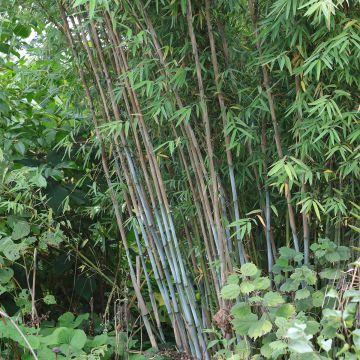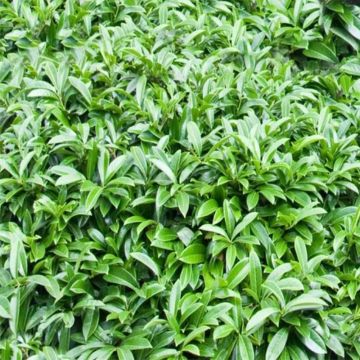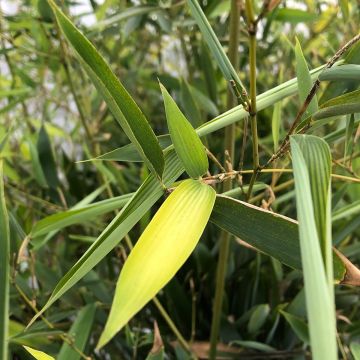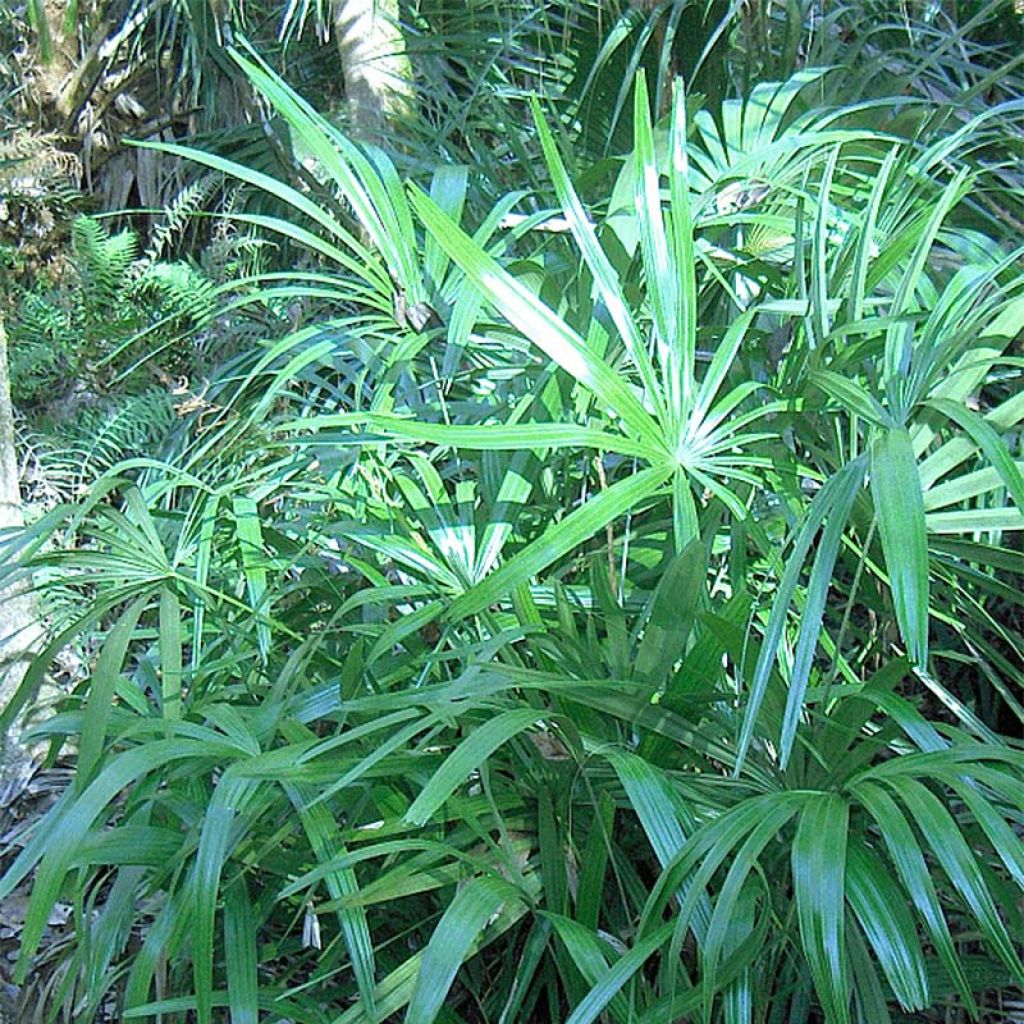

Rhapidophyllum hystrix - Palmier aiguille
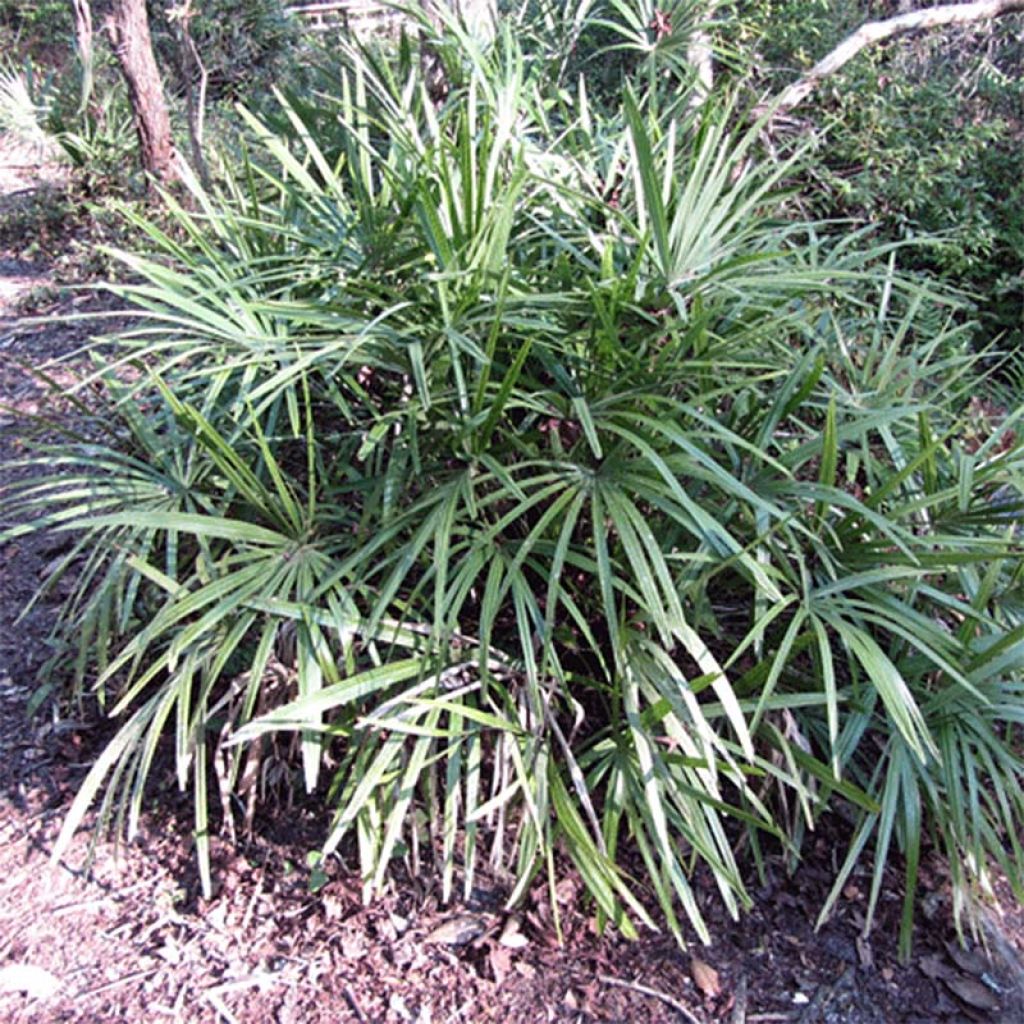

Rhapidophyllum hystrix - Palmier aiguille
Rhapidophyllum hystrix - Needle Palm
Rhapidophyllum hystrix
Needle Palm
Why not try an alternative variety in stock?
View all →This plant carries a 24 months recovery warranty
More information
We guarantee the quality of our plants for a full growing cycle, and will replace at our expense any plant that fails to recover under normal climatic and planting conditions.
From €5.90 for pickup delivery and €6.90 for home delivery
Express home delivery from €8.90.
Does this plant fit my garden?
Set up your Plantfit profile →
Description
The Needle Palm, in Latin Rhapidophyllum hystrix, is a remarkable North American species, even hardier than its famous cousin, Trachycarpus fortunei, but dependent on moist, even waterlogged soils. This astonishing palm, which tolerates shade well, can be grown in the ground in most areas, as long as it doesn't lack water. Forming a dense, low clump of large fan-shaped leaves carried by a short stipe that remains close to the ground, it brings a real touch of exoticism to any bed, and especially to water features.
Rhapidophyllum hystrix is sometimes called the Porcupine Palm because of the long black spines that cover its petioles. It belongs to the Arecaceae (Palm) family. It is native to the moist understory of several southeastern states in the United States: it can be found in Florida, Georgia, Mississippi, and North Carolina, sometimes growing in flooded areas. This evergreen palm, particularly resistant, is suitable to all climates, temperate and cold or subtropical and dry, as long as it benefits from fertile and consistently moist soil.
From a young age, this cespitose* palm shows a bushy habit that it will keep throughout its life, and its bluish-green leaves with gray-silver undersides are very elegant. Growing quite rapidly, it will reach about 3 m (10ft) in height and 2.50 m (8ft) in width at the age of 10, when planted in the ground. Its vegetation consists of a very short, often prostrate false trunk (stipe), not exceeding 1 m (3ft) in height and 20 cm (8in) in diameter (*capable of producing suckers as it ages). It is covered in brown fibers among which emerge long dark spines, remnants of the old petioles that persist on the plant long after the leaves have fallen. At the top of this stipe, a crown develops consisting of about 15 palmate leaves, 1 m (3ft) to 1.20 m (4ft) wide, divided into 20 to 25 stiff and leathery segments. This palm has male and female individuals, with very short inflorescences. The small flowers are composed of 3 dark red petals. The dark brown, pruinous fruits, borne on female plants, measure 1 cm (1in) in diameter. They are often entangled in the fibers of the stipe and the spines, at the base of the crown. The very hard, cream-coloured seeds germinate with difficulty, which may explain its relative rarity in cultivation.
The needle palm, along with Chamaerops humilis, is one of the easiest palms to acclimate in many of our regions, especially in cold and humid climates. When planted in the ground, it should be grown as a standalone specimen, near a water feature or not far from a swimming pool for example, along with Tetrapanax Rex, bananas, or cannas, in an exotic-inspired setting. A bit difficult to pair due to its strong personality, it can nevertheless be planted in a semi-shaded position in groups of 3 subjects and surrounded by a carpet of Petasites fragrans or Farfugium japonicum for example. In a contemporary garden, it will look beautiful above a sea of white pebbles. It will make a magnificent specimen on a terrace or balcony, planted in a carefully chosen large container, in consistently moist soil.
Report an error about the product description
Rhapidophyllum hystrix - Needle Palm in pictures
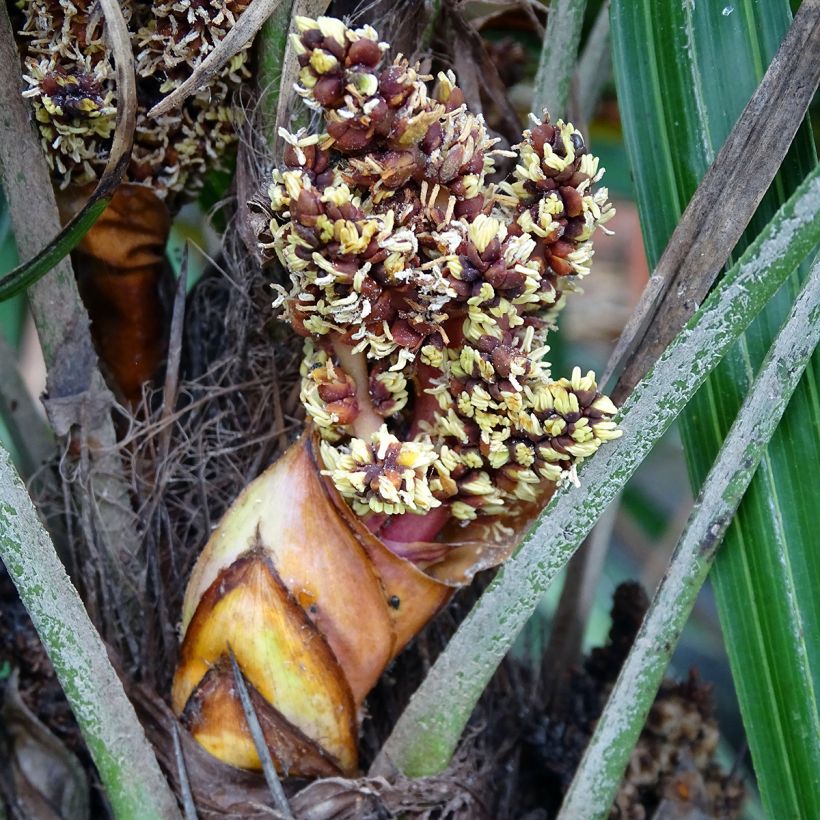

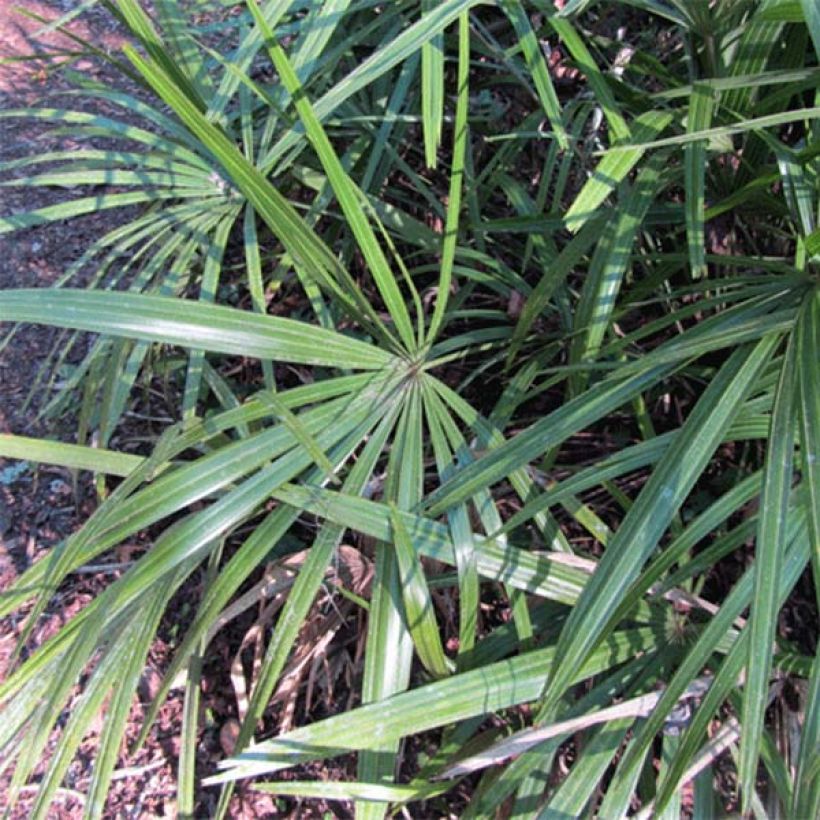

Plant habit
Flowering
Foliage
Botanical data
Rhapidophyllum
hystrix
Arecaceae
Needle Palm
North America
Other Palm trees A to Z
Planting and care
Plant the needle palm in any relatively fertile soil that remains moist, even marshy or waterlogged soils. The ideal is to plant it in a balanced mixture of potting soil and garden soil. Place it in a sunny but not scorching exposure (morning sun), a semi-shaded or even shaded position. Regularly water during the first 3 years, especially if the weather is dry. Easy to grow, it requires little maintenance except for pruning of the oldest fronds against the stipe.
Planting period
Intended location
Care
-
, onOrder confirmed
Reply from on Promesse de fleurs
Evergreen shrubs
Haven't found what you were looking for?
Hardiness is the lowest winter temperature a plant can endure without suffering serious damage or even dying. However, hardiness is affected by location (a sheltered area, such as a patio), protection (winter cover) and soil type (hardiness is improved by well-drained soil).

Photo Sharing Terms & Conditions
In order to encourage gardeners to interact and share their experiences, Promesse de fleurs offers various media enabling content to be uploaded onto its Site - in particular via the ‘Photo sharing’ module.
The User agrees to refrain from:
- Posting any content that is illegal, prejudicial, insulting, racist, inciteful to hatred, revisionist, contrary to public decency, that infringes on privacy or on the privacy rights of third parties, in particular the publicity rights of persons and goods, intellectual property rights, or the right to privacy.
- Submitting content on behalf of a third party;
- Impersonate the identity of a third party and/or publish any personal information about a third party;
In general, the User undertakes to refrain from any unethical behaviour.
All Content (in particular text, comments, files, images, photos, videos, creative works, etc.), which may be subject to property or intellectual property rights, image or other private rights, shall remain the property of the User, subject to the limited rights granted by the terms of the licence granted by Promesse de fleurs as stated below. Users are at liberty to publish or not to publish such Content on the Site, notably via the ‘Photo Sharing’ facility, and accept that this Content shall be made public and freely accessible, notably on the Internet.
Users further acknowledge, undertake to have ,and guarantee that they hold all necessary rights and permissions to publish such material on the Site, in particular with regard to the legislation in force pertaining to any privacy, property, intellectual property, image, or contractual rights, or rights of any other nature. By publishing such Content on the Site, Users acknowledge accepting full liability as publishers of the Content within the meaning of the law, and grant Promesse de fleurs, free of charge, an inclusive, worldwide licence for the said Content for the entire duration of its publication, including all reproduction, representation, up/downloading, displaying, performing, transmission, and storage rights.
Users also grant permission for their name to be linked to the Content and accept that this link may not always be made available.
By engaging in posting material, Users consent to their Content becoming automatically accessible on the Internet, in particular on other sites and/or blogs and/or web pages of the Promesse de fleurs site, including in particular social pages and the Promesse de fleurs catalogue.
Users may secure the removal of entrusted content free of charge by issuing a simple request via our contact form.
The flowering period indicated on our website applies to countries and regions located in USDA zone 8 (France, the United Kingdom, Ireland, the Netherlands, etc.)
It will vary according to where you live:
- In zones 9 to 10 (Italy, Spain, Greece, etc.), flowering will occur about 2 to 4 weeks earlier.
- In zones 6 to 7 (Germany, Poland, Slovenia, and lower mountainous regions), flowering will be delayed by 2 to 3 weeks.
- In zone 5 (Central Europe, Scandinavia), blooming will be delayed by 3 to 5 weeks.
In temperate climates, pruning of spring-flowering shrubs (forsythia, spireas, etc.) should be done just after flowering.
Pruning of summer-flowering shrubs (Indian Lilac, Perovskia, etc.) can be done in winter or spring.
In cold regions as well as with frost-sensitive plants, avoid pruning too early when severe frosts may still occur.
The planting period indicated on our website applies to countries and regions located in USDA zone 8 (France, United Kingdom, Ireland, Netherlands).
It will vary according to where you live:
- In Mediterranean zones (Marseille, Madrid, Milan, etc.), autumn and winter are the best planting periods.
- In continental zones (Strasbourg, Munich, Vienna, etc.), delay planting by 2 to 3 weeks in spring and bring it forward by 2 to 4 weeks in autumn.
- In mountainous regions (the Alps, Pyrenees, Carpathians, etc.), it is best to plant in late spring (May-June) or late summer (August-September).
The harvesting period indicated on our website applies to countries and regions in USDA zone 8 (France, England, Ireland, the Netherlands).
In colder areas (Scandinavia, Poland, Austria...) fruit and vegetable harvests are likely to be delayed by 3-4 weeks.
In warmer areas (Italy, Spain, Greece, etc.), harvesting will probably take place earlier, depending on weather conditions.
The sowing periods indicated on our website apply to countries and regions within USDA Zone 8 (France, UK, Ireland, Netherlands).
In colder areas (Scandinavia, Poland, Austria...), delay any outdoor sowing by 3-4 weeks, or sow under glass.
In warmer climes (Italy, Spain, Greece, etc.), bring outdoor sowing forward by a few weeks.

































